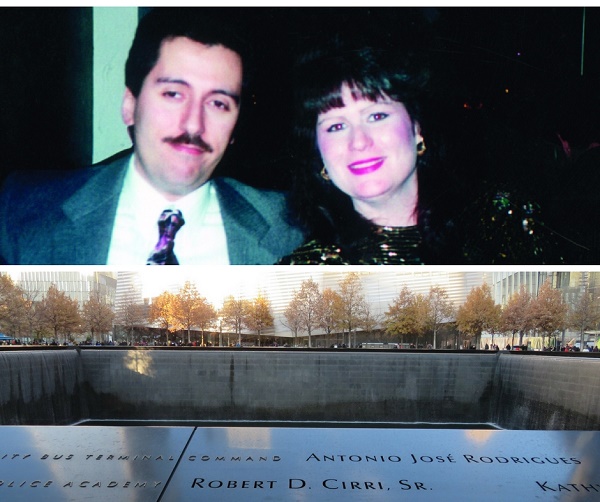New on View: Artifacts Added to In Memoriam and Historical Exhibition Galleries
New on View: Artifacts Added to In Memoriam and Historical Exhibition Galleries

A new rotation of artifacts on view in the In Memoriam and Historical Exhibition galleries at the 9/11 Memorial Museum illustrate the lives of some of those killed on Sept. 11 and the challenges immediately facing the survivors. The personal belongings and items provide a window into the interests and experiences of the individuals they represent, as well as give a glimpse at a world changed after the towers came down. We’re highlighting some notable items on view below.
Three tickets to the World Trade Center public-viewing platform and an Around Ground Zero map have been added to the In Memoriam gallery cases. In the weeks and months that followed the 9/11 attacks, to allow the thousands of visitors to Ground Zero a safe and dignified place for reflection, New York City officials worked with architects to create a temporary ramp and public-viewing platform at Fulton Street. The platform opened on Dec. 30, 2001, and was accessible with free, timed tickets. Inspired by a memorial map of war-ravaged Sarajevo in Bosnia and Herzegovina, architect Laura Kurgan conceived the Around Ground Zero map to aid people visiting the site.

A diary kept by PAPD Lieutenant William Keegan now displays a new set of pages. Keegan, night shift supervisor at Ground Zero, maintained a personal log which documented issues that arose during this shift, which over time evolved into a diary of intimate observations of life at Ground Zero. The pages on view cover January 20–January 22, 2002, and highlight the recovery of equipment and personal property, as well as many of the safety obstacles that were being encountered at the World Trade Center site daily.
An NYPD detective’s note and contents of a portfolio carried by Maynard S. Spence Jr. are now on display in the Historical Exhibition. Spence was a construction safety consultant at Marsh & McLennan Companies’ Georgia location who had been attending a meeting in the firm’s North Tower offices on 9/11. The contents of the portfolio Spence carried, including notes and photographs, were donated to the Museum by Spence’s wife.

Also rotating onto view in the “After 9/11” section of the Historical Exhibition is a new teddy bear with a heart-design sweater from the Pier 94 Family Assistance Center.
Within hours of the 9/11 attacks, government agencies, American and United Airlines and the American Red Cross began to establish family assistance centers to serve relatives of the missing and presumed dead. Professional staff and volunteers registered missing person reports and requests for financial assistance, collected DNA samples for victim identification, and helped next of kin obtain death certificates, in addition to providing spiritual support and child care, among other kindnesses.

The 9/11 Memorial Museum regularly rotates new artifacts into the exhibition spaces. Click here to learn more about how we acquire artifacts.
By 9/11 Memorial Staff
Previous Post
Washington Post Correspondent Reflects on Reporting in the Middle East at the 9/11 Memorial Museum

Washington Post correspondent Souad Mekhennet spoke at the 9/11 Memorial Museum on Monday night, illuminating some of the tales from her book “I Was Told to Come Alone: My Journey Behind the Lines of Jihad.”
Next Post
Forgot to Bring the Gravy: Wife of PAPD Lieutenant Cirri Recalls Thanksgiving Holiday Ruse

As American families gather for Thanksgiving dinner each November, they often have the opportunity to learn more about their loved ones and those special dynamics that exist between family members.